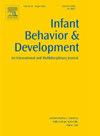It’s You and Me: Infants’ cross-modal communicative signals and mother-infant interactive behavior predict infant regulatory patterns in the still-face paradigm at 3 months
Abstract
Infant regulatory behavior develops since birth and impacts their early social interactions. Infants differ in the relative coherence and incoherence of their cross-modal communicative signals during en-face infant-caregiver interactions. We expand this research by evaluating whether different infant regulatory patterns observed during the Face-to-Face Still-Face (FFSF) at 3 months are associated with the coherence or incoherence of infants’ cross-modal communicative behaviors during en-face interactions or with multiple dimensions of mother-infant interactive behavior during free-play. Analyses were based on data collected from 100 mother-infant dyads from urban, working- and middle-class backgrounds in Portugal who were videotaped during the FFSF and free play at 3 months. Results confirm that infants’ different regulatory behavior patterns in the FFSF at 3 months are associated with the coherence and incoherence of their cross-modal interactive behaviors and specific aspects of mother-infant interaction. Infants with a Social-Positive oriented regulatory pattern during the FFSF displayed more coherent and less incoherent communicative behaviors with their mothers and were more cooperative during free play. In turn, their mothers were more sensitive. Our findings support the perspective that infants' regulatory behavior strategies in the context of caregiver regulatory support and sensitivity are likely to increase dyadic correspondence and infant ability to engage with the world.

 求助内容:
求助内容: 应助结果提醒方式:
应助结果提醒方式:


